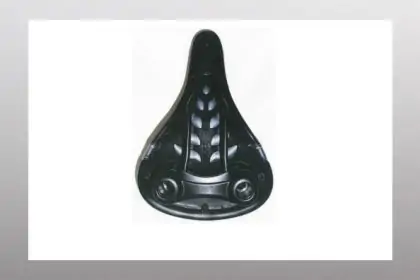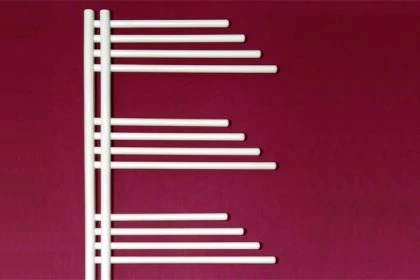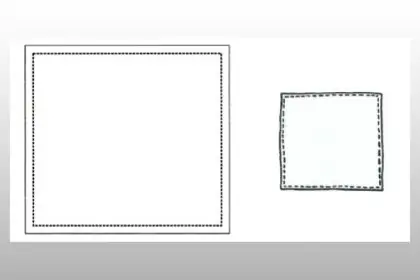Visibility is relevant in design protection. What is protected is exactly what is shown in the application. And what applies to the underside of a saddle? This is regulated separately for elements in a complex product by German § 4 DesignG – in accordance with EU law, which, however, needs to be interpreted, especially ‘intended use’.
 In principle, a design (as German design as well as a European community design) must be represented in its application in a quality that clearly shows all details for which protection is claimed. This is also enshrined in the highest European case law (see Mast-Jägermeister v. EUIPO; ECJ, C:2018:534).
In principle, a design (as German design as well as a European community design) must be represented in its application in a quality that clearly shows all details for which protection is claimed. This is also enshrined in the highest European case law (see Mast-Jägermeister v. EUIPO; ECJ, C:2018:534).
It follows from this alone that visibility is elementary in design protection. A design protection is generally only registered for exactly the representation in which the design was applied for with all visible parts.
This is, of course, particularly difficult in a complex product, which is why the German Design Act also provides a special paragraph for design protection of complex products: § 4 DesignG in implementation of the EU Directive 98/71/EC. According to this, an element that is inserted into a complex product must be visible in the representation of the design – “when it is used as intended”. This regulation applies to any complex industrial or handicraft object and also includes individual parts that are to be assembled into a complex product.
Case ‘Sattelunterseite’ before BGH
In practice, however, this is not always easy to assess. Specifically, the “saddle underside” case was heard before the Federal Supreme Court as an appeal of the decision of the Federal Patent Court on a nullity action against the design of a bicycle or motorbike saddle. In the action for revocation, it was argued that this protected design lacked novelty and individual character compared to the previously known set of shapes. Above all, it was also excluded from design protection under § 4 Design Act, as it was not visible as a structural element of the complex products “bicycle” or “motorbike” when used as intended. The BPatG had explained that the intended use of the bicycle by the end user included both the riding process itself and the mounting and dismounting of the bicycle, but that the representation of the design was not visible in this process. The disputed saddle was shown in the representation only as the underside of a saddle, i.e. from the perspective from below.
The Federal Patent Court upheld the action, mainly with reference to § 4 Design Act. A saddle, when used as intended in the product into which it is incorporated (i.e. as a bicycle or motorbike), would only be visible from above, possibly also from the side, but never from below, the BPatG had stated. However, according to the unambiguous wording of Sec. 4 Design Act, it was necessary that a component “inserted” into the complex product remained visible. Therefore, it declared the saddle design invalid (30 W (pat) 809/18).
Time of the determination of visibility
The owner of the contested saddle design appealed against this decision to the Federal Court of Justice (BGH). The latter upheld the BPatG’s finding that, with regard to “visibility in intended use”, what matters is the visibility of the design contained on the underside of the saddle after the component (saddle) has been installed in the complex product (bicycle), but not before the installation or after the removal of the component.
Specific use or viewer perspective relevant for visibility?
The BGH emphasised that according to recital 12, first sentence, of Directive 98/71/EC, the protection conferred by a design does not extend to features of a component which are invisible when the component is incorporated. However, the court explained, it was not clear from EU Directive 98/71/EC whether the determination of visibility requires the use in certain use and above all also the viewer’s perspective or whether the objective possibility of being able to recognise the design when the component is installed is sufficient.
Therefore, the BGH decided to refer this question to the ECJ for a preliminary ruling.
Interpretation of ‘intended use’?
Should the ECJ see an intended use or viewer perspective as a requirement for visibility within the meaning of the Directive, the BGH also asks for interpretation and concretisation of the term “intended use”:
- Does it depend on the intended use of the manufacturer of the product or on the usual use of the complex product by consumers?
- How should “ancillary uses” be classified or acts indirectly related to the main purpose? (In the present case, these would be, for example, measures of storage and transport or a possible use as the underside of a motorbike saddle)
- And are there criteria for assessing “intended” use within the meaning of Art. 3(3) and (4) of Directive 98/71/EC?
These are indeed as yet unresolved questions on the terms ‘visibility’ and ‘intended use’, legal clarity would be very welcome. In any case, the case of the ‘underside of the saddle’ is suspended pending the ECJ’s decision on this reference for a preliminary ruling.
Do you need assistance in protecting or defending a design?
Our lawyers will be happy to advise you. If you are interested, please contact us – we look forward to your call!
Sources for text and image:
BGH ‘Sattelunterseite’, I ZB 31/20








Leave a Reply